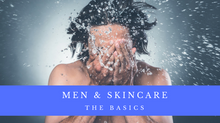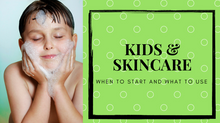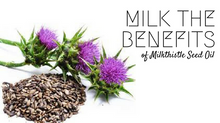Propylene Glycol - Is it Safe in Skincare?
- Mar 16, 2018
- 3 min read

It seems to be the year of “FREE” in skincare. Free of parabens, free of gluten, free of GMO’s even…and MORE! In many cases, this is just a marketing ploy to get consumers to buy products, as many of these ingredients are only thought to be harmful if ingested, not applied to our skin. Many ingredients, like gluten, wouldn’t even be found in many skincare products in the first place! Regardless, Kosmetikos believes that what we put ON our skin is just as important as what we ingest through eating. That being said, one ingredient, Propylene Glycol, may just be worth omitting from your skincare if you are concerned about harmful ingredients. Let’s take a closer look at WHY.
What IS Propylene Glycol?
Propylene glycol (PG) comes directly from propylene, a chemical compound produced as a byproduct of petroleum refining. Petroleum is a crude oil harvested from oil drilling. It may also be manufactured from natural gas.
How is it used?
Chemists can create a whole array of products from propylene including chemicals used in plastics and propylene oxide, from where we get propylene glycol. Because it can safely mix with water and is categorized as “non-toxic,” propylene glycol is used several ways:
A dissolving agent which allows one ingredient to dissolve into another
To help maintain the temperature of products by stabilizing them
To give products slip and glide
To help product ingredients mix together
To attract water to a product, or a humectant
What products is it found in?
Common products you’ll find PG in are body moisturizers, makeup foundations, spray deodorants, lipsticks, haircare products, baby wipes and more. At the same time, you’ll find it in non-personal care products like antifreeze, floor wax, house paints and your car’s brake fluid!
Because PG is so versatile and economical it is found in many industries. Which raises the questions… how safe is it to use in my skincare?
Propylene Glycol in Skincare
Although used as a humectant in products, PG does very little to actually hydrate your skin. In fact, it creates a seal over your skin and doesn’t allow hydration to get in, or out. To make matters worse, when used on a long-term basis, it will start to draw water from deeper layers of your skin and can potentially dry out your skin. This can lead to your skin looking dull and lackluster.
In addition to zapping your skin’s water stores, PG may also disrupt your skin’s oil balance. If not removed with an oil-based cleanser, Propylene glycol may remain on the skin, even after cleansing. When left, it may dissolve the rich fatty esters and oils your skin needs to stay nourished and pliable. As a result, your skin may get drier and drier, and you may keep applying moisturizer, but it never really gets to clean, fresh skin where it is needed.
Can Propylene Glycol Affect Overall Health?
Although the FDA has labeled the quantities of PG used in skincare products safe, we also know that Propylene glycol may enhance the penetration of other products you may be using. This means that your retinol serums, body lotions and perfumes may be penetrating your skin deeper, sometimes down into the bloodstream. At this time, there are no clinical studies to prove this, but other comparable chemicals have been studied and found to accumulate in the human bloodstream.
In addition to concerns about Propylene Glycol getting into our bloodstream, it may also be guilty of causing skin irritation. This may be due to its ability to allow other ingredients to penetrate more deeply, but according to the Material Safety Data Sheet for Propylene glycol, it is a strong chemical irritant that may cause contact dermatitis.
Which leaves the question to be asked, “Is THIS something you want to use on YOUR skin?”
Did you know? Kosmetikos Skincare is 100% Propylene glycol free?













































Comments